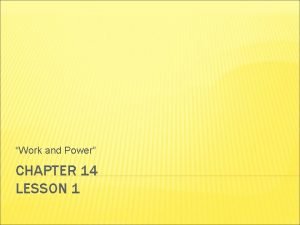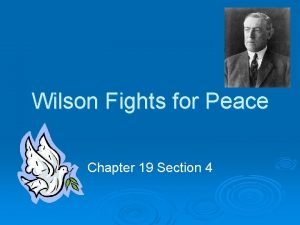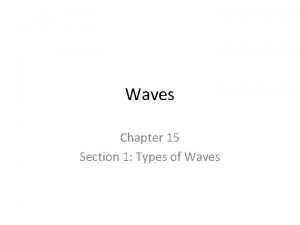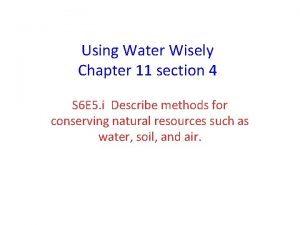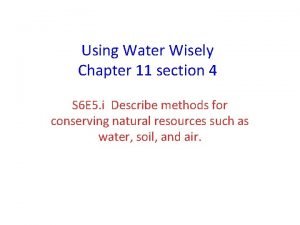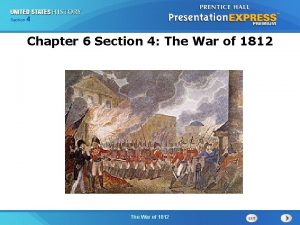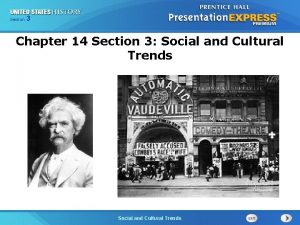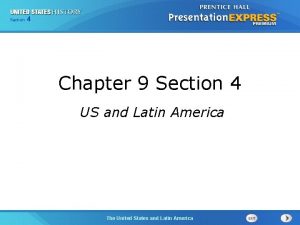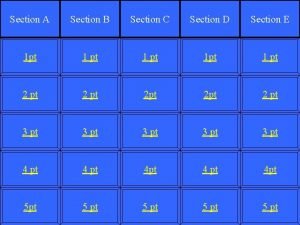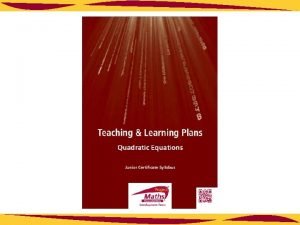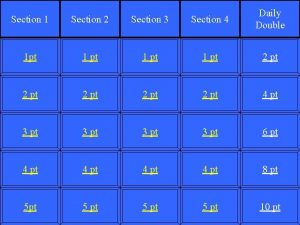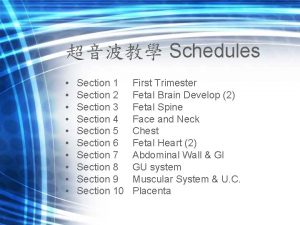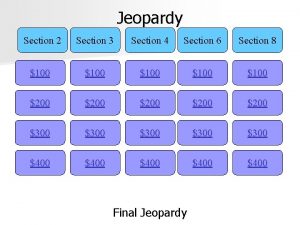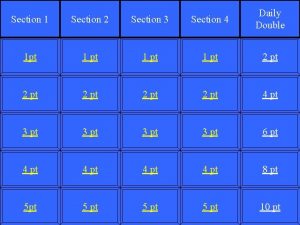Chapter Section 3 25 Section 1 Section 3
















- Slides: 16

Chapter Section 3 25 Section 1 Section 3: Farmers and Populism The Cold Farmers War Begins and Populism

Chapter Section 3 25 Section 1 Objectives • Analyze the problems farmers faced and the groups they formed to address them. • Assess the goals of the Populists, and explain why the Populist Party did not last. The Cold Farmers War Begins and Populism

Chapter Section 3 25 Section 1 Terms and People • Oliver H. Kelley – a Minnesota farmer and businessman who organized the Grange • Grange – an organization of farmers who joined to learn about new farming techniques, to call for the regulation of railroad and grain elevator rates, and to prompt the establishment of the ICC • Populist Party – a political party formed in 1892 on a platform of silver coinage, government ownership of the railroads, and fighting the corrupt and unresponsive elite The Cold Farmers War Begins and Populism

Chapter Section 3 25 Section 1 Terms and People (continued) • William Jennings Bryan – the Democratic nominee for president in 1896, who supported many Populist principles including silver coinage, and who toured the country to speak directly to voters • William Mc. Kinley – the Republican candidate for president in 1896, who followed a traditional strategy of letting party workers campaign for him The Cold Farmers War Begins and Populism

Chapter Section 3 25 Section 1 What led to the rise of the Populist movement, and what effect did it have? Millions of Americans moved west after the Civil War to pursue the American dream. A variety of factors led to the social & political revolt known as Populism Created largest third party movement in American history. The Cold Farmers War Begins and Populism

Chapter Section 3 25 Section 1 Problems facing the farmers of the West and South low prices for crops high transportation, equipment, loan costs drought reduced influence in politics They didn’t anticipate many problems that made survival nearly impossible. The Cold Farmers War Begins and Populism

Chapter Section 3 25 Section 1 Frustrated by these problems, farmers began to organize. The Cold Farmers War Begins and Populism

Chapter Section 3 25 Section 1 Farmers created groups to address their problems. These groups formed a network called the Granger movement “The Grange”. The Grange declined after the 1870 s, but Farmers’ Alliances continued the Grange’s goals. The Cold Farmers War Begins and Populism

Chapter Section 3 25 Section 1 The spread of the Farmers’ Alliances led to the formation of the Populist Party in 1892. coinage of silver The Populist platform, called for: an income tax government ownership of railroads bank regulations The Cold Farmers War Begins and Populism

Chapter Section 3 25 Section 1 The debate over monetary policy was an important issue of the day. Those who wanted a gold standard were on one side. Those who wanted to use silver—including the Populist Party—were on the other. The Cold Farmers War Begins and Populism

Chapter Section 3 25 Section 1 The Populists did well in 1892, electing 3 governors, 5 senators, and 10 congressmen. The Populist candidate for president received one million votes in that election. The Cold Farmers War Begins and Populism

Chapter Section 3 25 Section 1 An economic depression began in 1893 and labor unrest and violence broke out. The Populist Party (aka People’s Party) grew. The Cold Farmers War Begins and Populism

Chapter Section 3 25 Section 1 William Jennings Bryan campaigned against Republican candidate William Mc. Kinley in a way that had never been seen before. He toured the country, talking directly to voters. The Cold Farmers War Begins and Populism

Chapter Section 3 25 Section 1 Mc. Kinley won against Bryan in 1896 and in 1900. Bryan’s emphasis on money reform wasn’t popular with urban workers. The Cold Farmers War Begins and Populism

Chapter Section 3 25 Section 1 Section 3 Assessment 1. What were farmers’ major grievances and complaints? (Pg. 535) 2. What reforms did the farmers’ organizations introduce? (Pg. 535 -536) 3. What were the goals of the Populist Party? (Pg. 536) 4. What did William Jennings Bryan do to affect the Populist Party? (Pg. 539) The Cold Farmers War Begins and Populism

Chapter Section 3 25 Section 1 1. Drought; reduction in political pull; economic concerns; etc. 2. The Grange System (became Farmers’ Alliance) to respond to issues/concerns 3. Called for government ownership of railroads; income tax; coinage of silver; bank regulations; etc. 4. Emphasized of money in his campaign The Cold Farmers War Begins and Populism
 Chapter 10 section 1 meiosis
Chapter 10 section 1 meiosis Revolved section view
Revolved section view Sectional view definition
Sectional view definition Half section view examples
Half section view examples Work and energy section 2 describing energy answer key
Work and energy section 2 describing energy answer key Chapter 17 section 3 luther leads the reformation
Chapter 17 section 3 luther leads the reformation Chapter 30 section 2 world history
Chapter 30 section 2 world history Chapter 15 section 2 world history
Chapter 15 section 2 world history Chapter 10 section 2 central america and the caribbean
Chapter 10 section 2 central america and the caribbean Chapter 14 section 1 work and power
Chapter 14 section 1 work and power Chapter 19 section 4 wilson fights for peace
Chapter 19 section 4 wilson fights for peace Chapter 15 section 1 types of waves answer key
Chapter 15 section 1 types of waves answer key Chapter 24 section 2 watergate answers
Chapter 24 section 2 watergate answers Chapter 11 section 4 using water wisely answer key
Chapter 11 section 4 using water wisely answer key Using water wisely
Using water wisely 5 determinants of supply
5 determinants of supply Economic protest parties definition
Economic protest parties definition









